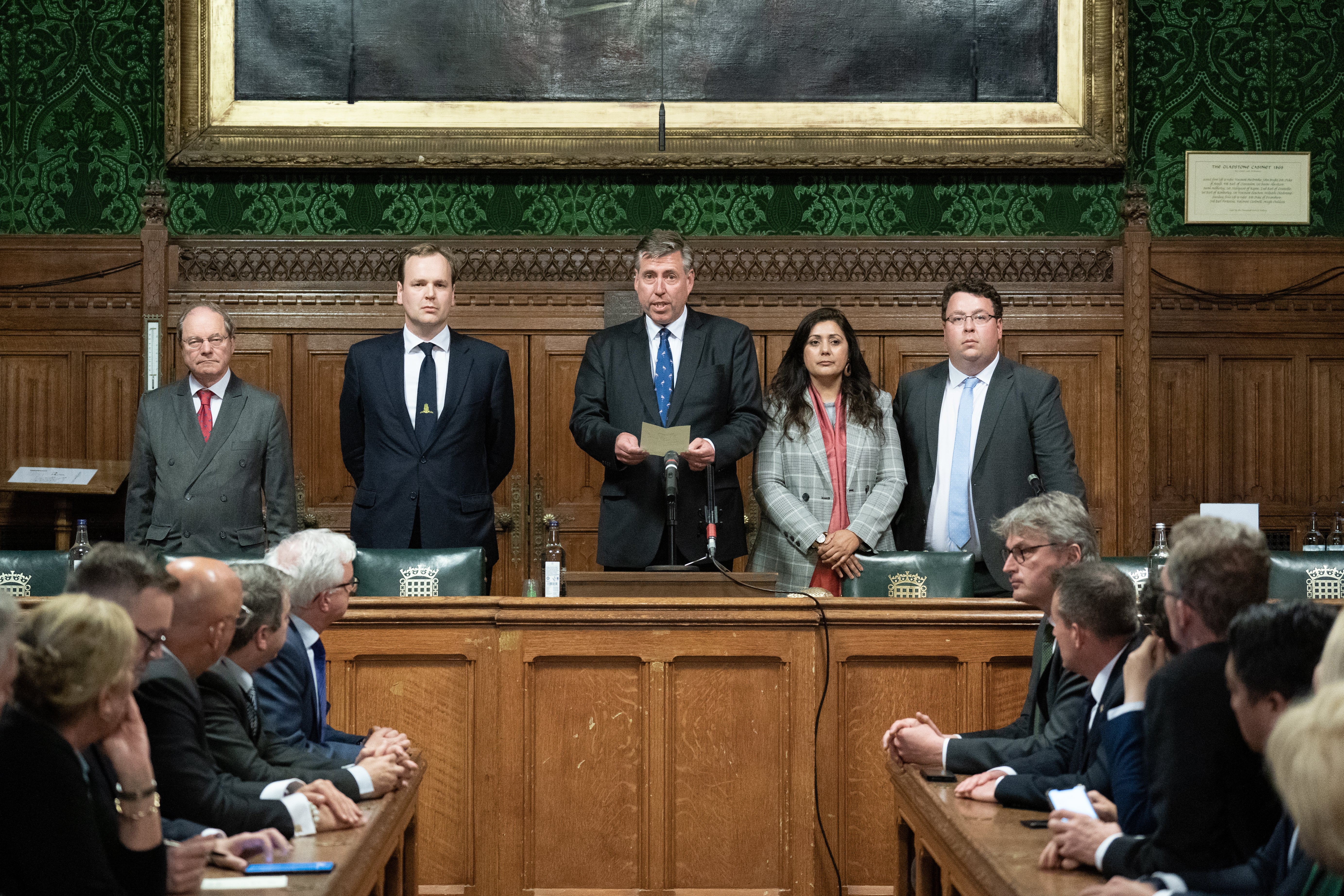Tories need to thin the bloated leadership race
The 1922 Committee faces the urgent task of squeezing ambitious also-rans out of an unwieldy race, writes Sean O’Grady


If the Conservatives are not careful, their leadership election itself could turn into a slightly embarrassing display of incompetence and general chaos, with too many candidates promising much the same things to the same narrow electorate of 359 MPs and some 150,000 activists.
Voters may feel they haven’t got the energy to understand the nuanced policy differences between various hard Brexiteers gathering to take Britain into the 2030s. If so, then the Tory MPs, members and the pollsters won’t gain much of an idea in the coming weeks of exposure, interviews and regional hustings about who might conceivably help their party win the next election.
At the moment, Tories are spoiled for choice, at least in terms of quantity. There are as many as 14 emerging candidates, a record for any major party leadership contest. For the record, they are, in no particular order: Steve Baker (confirmed), Priti Patel (mulling), Ben Wallace (asking his family), Tom Tugendhat (confirmed), Liz Truss (all but certain to run); Jeremy Hunt (all but certain to run, runner-up last time); Nadhim Zahawi (all but certain); Rishi Sunak (confirmed and once a hot favourite); Sajid Javid (all but certain); Suella Braverman (confirmed); John Baron (confirmed); Penny Mordaunt (all but certain); Kemi Badenoch (confirmed) and Grant Shapps (taking soundings).
So there you go. There’s cabinet ministers, backbenchers, men, women, social conservatives and social liberals, Remainers, Leavers, Thatcherites, Populists, One Nation Tories, super-rich to just wealthy, varied ethnic backgrounds and variously inspirational backstories, ex-services, ex-lawyers, self-made businesspeople, (relative) introverts, extroverts, orators and rotten speakers, pro-trans or anti-woke, public school or comp, older and ginger, bald or hirsute, bearded or not… and lots to talk about, from inflation and tax cuts to Channel 4 and rail strikes.
Yet there’ll just be a Tower of Babel unless they rapidly thin the field. As the rules presently stand, each candidate only needs eight nominations to get on the ballot paper, a figure invented for a much smaller parliamentary party than the one elected in 2019. So it is perfectly possible that 14 or more people will be able to launch a campaign. Then, even with one exhaustive ballot each day to eliminate stragglers, it would take a fortnight to get down to the top two, who would then tour the country for hustings and rallies. The election would drag on.
The 1922 Committee could easily curtail this by increasing the number of nominations required to stand, thus knocking out some weaker candidates at the earliest stage. The extreme step of disenfranchising the grassroots doesn’t seem to be picking up momentum. It’s just possible, as in 2016, that only one candidate is left at the end of the MP stage, meaning no membership vote is necessary. However, that was the result of the highly confused contest between Theresa May and Andrea Leadsom when the latter was forced to drop out after making an offensive remark about having more insight as a result of having children (in contrast to May).
Which brings us to the usefulness of this exercise, as a kind of dry run for a general election campaign. Cheesy family-orientated interviews, colour supplement interviews, hustings, TV debates, social media channels… the contest should put each politician through the kind of scrutiny and pressure they’d get at the next election. They’ll need policies that add up, some new outfits, catchphrases, a glossy manifesto, and a proven ability to stand up to the likes of Andrew Neil and Kay Burley.
This can be where favourites falter. As with Leadsom’s terminal gaffe in 2016, promising outsiders can come a cropper with an unforced error or the collapse of a “dream ticket”. This misfortune befell Michael Howard in 1997 when his junior “running mate” William Hague decided to strike out on his own; and when Michael Gove stabbed Boris Johnson in the front and launched his own bid in 2016. And who could forget the great outsiders surprising the establishment, such as Margaret Thatcher in 1975?
Most of the fringe candidates are not in it to win, but merely to put down a marker for a future bid or to reserve themselves a place at the winner’s cabinet table, as when Matt Hancock was rewarded with the health department after gaining all of 20 votes in the 2019 contest. Trying to squeeze ambitious also-rans out of the race will be the hardest task facing the 1922 Committee in the coming days. It mustn’t flinch.
Subscribe to Independent Premium to bookmark this article
Want to bookmark your favourite articles and stories to read or reference later? Start your Independent Premium subscription today.



Join our commenting forum
Join thought-provoking conversations, follow other Independent readers and see their replies
Comments